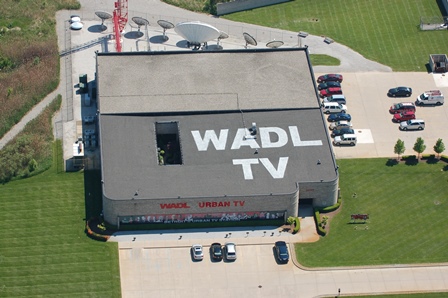FCC's Spectrum Price List Has Many Licensees Doing The Math
WASHINGTON— Broadcasters are looking at their balance sheets, now that the FCC has issued its “price list” for the “maximum” and “median” values to be paid for stations that relinquish their licenses in the incentive spectrum auction now scheduled to begin in 2016. In many cases, the proposed sums are substantially higher than expected, especially if signals pose interference problems to nearby larger markets.
The commission’s purchase proposals, issued as the federal government’s new fiscal year began on Oct. 1, establish an outlay of up to $38 billion to broadcasters, based on the recovery of 126 MHz of spectrum and AT&T’s pledge to spend $9 billion in the auction if its acquisition of DirecTV is approved. If, as some observers expect, only two- thirds of that goal (about 84 MHz of airwaves) is relinquished, the pay-out would be about $26 billion at top valuations. A portion of the reclaimed airwaves will not be sold to wireless carriers (whose spectrum purchases will fund the FCC payments to stations); about 26 MHz will be retained for use as guard bands and buffers between broadcast and wireless services sharing the bands.
A VARIETY OF RESPONSES
Although the method for the simultaneous reverse action (to reclaim airwaves) and forward auction (to sell spectrum to wireless operators) has long been known, the new price list is putting broadcasters into a new frame of mind about how to handle the process.
Preston Padden, executive director of the newly formed group called “Expanding Opportunities for Broadcasters Coalition,” expects a variety of station responses to the auction.

Preston Padden
“It’s hard to have a blanket categorization” about who will sell, Padden said. He is awaiting further FCC explanations “to help individual stations understand their particular economic opportunity as distinguished from market-wide pricing.”
Padden, a longtime lobbyist and executive at Disney, Fox, Metromedia and an early independent TV trade association, cited two “important steps” that broadcasters must get from the FCC:
Get the TV Tech Newsletter
The professional video industry's #1 source for news, trends and product and tech information. Sign up below.
• Advice on what kinds of adjustment or score factors will affect the price.; and
• Explanation of the proposed “dynamic reserve pricing.”
“We are hoping that broadcasters get considerable details about both the adjustment factor and dynamic pricing by late fall,” Padden added.
If fully realized, the auction could actually bring in $45 billion. From that sum, the FCC will deduct $7 billion: $250 million to run the auction; $1.75 billion to reimburse broadcasters for expenses during the repacking of spectrum assignments; $5 billion to establish the "FirstNet" high-speed public safety network for first responders, now being created by the National Telecommunications and Information Administration.
In its “Estimated Potential Auction Compensation” summary, the FCC acknowledged that “prices will be bid down in many markets and payouts to many winning bidders will be lower” than the sums on the list. The Compensation list typically showed a variance of 10 percent to 20 percent between the “median” and “maximum” prices for full-power stations, although in some markets—and for many Class A stations nationwide—the gap ranges up to 50 percent.
Many observers agree with the FCC warning that that ultimately, the prices actually paid will be less than the "median" target sum; but they note that even the lower amount is more than early estimates.
Investment banker Greenhill & Company devised the price list in collaboration with the FCC staff. The fundamental sums were derived from AT&T data about spectrum value based on a calculation of $1.50 per MHz "POP" (point-of-presence access site multiplied by the population in a broadcast coverage area). Given the source, some skeptics have questioned whether wireless carriers will actually spend at that level during the forward auction that will interleave with the broadcast reverse auction process. The proposed underlying value is significantly higher than the $1.28/MHz POP price in a 2008 FCC spectrum auction.
LOCAL VARIATIONS
The market-by-market variations are significant. A high-profile example is the $100 million maximum sum for a West Palm Beach/Ft. Pierce, FL (market #38) channel compared to $80 million for Miami/Ft. Lauderdale (market #16) or $85 million for Orlando/Daytona Beach/Melbourne (market #18). The West Palm signals potentially interfere with the two larger markets, so the FCC deemed their value to be about 20% higher.
Similar situations crop up in Providence (#53) at $160 million maximum, where signals reach into the Boston area (#7), which has a $140 million top price. Several smaller markets such as Palm Springs, Santa Barbara plus San Diego also may see higher prices because of their proximity to Los Angeles, which the FCC expects to be the most costly market ($570 million maximum; $340 million median). That's pricier than market #1 New York ($490 max/$410 median).
CALCULATION OPTIONS
The potential generosity of the FCC price list is forcing many stations to re-evaluate their auction strategies.
Kevin Adell, CEO and founder/owner of WADL-TV, an independent channel in Detroit, firmly intends to participate in the auction. “I don’t expect other stations in the Detroit market—some of which are owned by big groups and networks—to sell,” he said. “It’s a great time to sell, and you’ll never get this type of price.”

Adell built the station “from a construction permit when [I] was 21 years old... The business has changed,” he adds, singling out the move from analog to digital which meant a shift from five million watts to one million watts. He expects to get $170 million, the top end of the FCC’s price list for Detroit.
“Instead of fighting with the government, I’m taking the chips off the table now,” Adell said.
Another independent TV station president in a top 10 market, who asked not to be named, said that he expects considerable participation from similar stations. “For small, independent stations, the funds could be used to shift from a poor TV business model to a more promising model on another platform,” he said. In particular, he cited the value to public broadcasters, forecasting an “exodus to new forms of public media on the Internet or other platforms.”
Jack Goodman, a communications attorney in Washington and former NAB general counsel, added a political insight, citing the challenges that some public TV stations face, especially if their licenses are owned by a state entity, such as an educational institution. In states where a conservative legislature already wants to cut public TV support, the auction is a great enticement to abandon the station altogether, he said.

Jack Goodman
“Where else will you get that opportunity?” Goodman asked rhetorically. He acknowledged that “channel sharing is an easy fit,” especially for public stations, but he said such deals are “not likely.”
According to Howard Liberman, a partner at Philadelphia-based law firm Drinker Biddle & Reath and a long-time broadcast attorney, “a big unknown is the religious stations.” He pointed out that the stations “have been quiet” about their auction plans, but he wondered, “why wouldn’t they [sell] and use the money for their missions?”
Liberman also expects that the auction may trigger more “sidecar” deals in which a local station may buy another channel in the market. Padden of EOBC also cited the changes stemming for such deals, noting that when the FCC disallowed joint sales agreements in the spring, “the same order said it is OK for one station to be an affiliate of two top four networks” in some markets.
“The value of network affiliations has always been a game of musical chairs,” Padden said. It will be “harder for affiliations going forward.”
Channel sharing agreements (CSAs), in which two separate stations co-exist on a single 6 MHz band, is also being assessed. Some stations are believed to be evaluating how to implement such arrangements, given recent FCC rules on joint sales agreements and other structural separations.
Liberman foresees business complications that may limit such deals. The two stations would have to coordinate transmitters, office space and other logistics, he said, plus assure the financial viability of the other entity to warrant that if one station eventually fails, it doesn't bring the CSA ally down, too.
WHAT’S NEXT
Since selling stations and wireless bidders cannot confer or consort with each other during the auction process, observers expect some surprises may emerge during the actual bidding. In addition to the expected bidders, such as Verizon and AT&T, many analysts believe cash-rich digital companies—Google, Apple, Amazon or DISH—may slap down funds for prime spectrum.
Meanwhile, the coming months promise to be lively. Two weeks ago, the FCC pushed the acution timetable into early 2016, citing “undeniable impediments” to the mid-2015 deadline that FCC Chairman Tom Wheeler had adamantly pushed. Pending legal challenges prompted the delays. Now that the U.S. Circuit Appeals Court has set its review schedule for early 2015, the previous schedule was not feasible, according to a member of the FCC staff.
Separately, a Government Accountability office study may also affect the timetable. Within days of the FCC price list disclosure, Reps. Joe Barton (R-Texas), a member of the House Subcommittee on Communications and Technology, and Anna G. Eshoo (D-Calif.), the ranking Democrat on that panel, requested that the GAO examine the potential impact of the auction on low-power TV (LPTV) broadcasters and TV translator stations, as well as their viewers and communities. The bipartisan request cited the potential “adverse impact” that spectrum repacking might have on such signals. Unfortunately the report may not come in time to affect the auctions. Mike Gravino, head of the LPTV Spectrum Rights Coalition said the GAO’s internal process will mean that such a study will not start until after the new year. “They’re going to take their time,” he said.
Just before the FCC price list surfaced, 30 organizations (including wireless carriers, equipment makers, medical telemetry companies and broadcasters) filed petitions at the commission to postpone the auction while the D.C. Circuit Court reviews proposed rules that would affect the coverage areas of repacked TV channels that remain on the air.
In addition, border issues for stations where signals overlap with channels in Mexico and Canada—still may face challenges. Prices for stations in cities such as Detroit, Buffalo and San Diego were significantly higher than similarly sized markets elsewhere in the country. Goodman pointed to a treaty with Canada “to protect unbuilt ‘phantom’ station allocations” near the border. He believes the repacking coordination deals with Mexico will be especially difficult, and that “it will take time” to hammer out agreements with Canada for stations along the Northeast and upper Midwest border.
Goodman summarized that the LPTV issues and repacking must be resolved before the auction can be completed. And he noted that the FCC hasn’t indicated how many stations it wants to buy in any particular market.
The bottom line—an appropriate consideration in the auction process—comes down to this: Goodman believes—as do many others—that enough stations will be sold because the owners are “thinking about the grandkids.” That’s where the money will go.
Gary Arlen, a contributor to Broadcasting & Cable, NextTV and TV Tech, is known for his visionary insights into the convergence of media + telecom + content + technology. His perspectives on public/tech policy, marketing and audience measurement have added to the value of his research and analyses of emerging interactive and broadband services. Gary was founder/editor/publisher of Interactivity Report, TeleServices Report and other influential newsletters; he was the long-time “curmudgeon” columnist for Multichannel News as well as a regular contributor to AdMap, Washington Technology and Telecommunications Reports; Gary writes regularly about trends and media/marketing for the Consumer Technology Association's i3 magazine plus several blogs.

